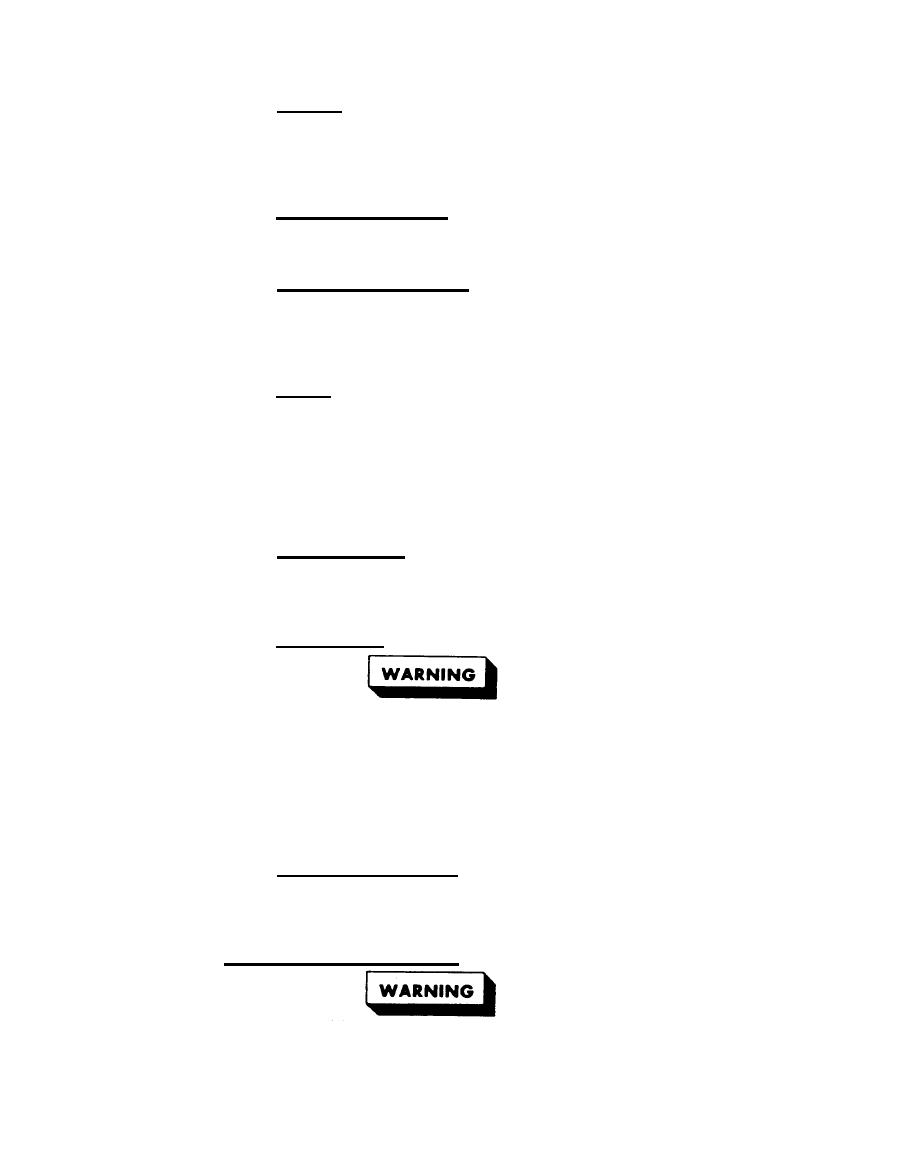 |
|||
|
|
|||
|
|
|||
| ||||||||||
|
|
 TM 5-6640-213-14
(c) Pipets. Prior to use, inspect pipets for damage
to the tip. Use a suction bulb, not the mount, to draw the solution
into the pipet. Remove the bulb and blot the tip with filter paper,
and let the meniscus drop until it coincides with the etched refer-
ence line. Allow the solution to drain into an appropriate container.
(e) Centrifuge Tubes. Always balance opposing cen-
trifuge tubes by weight. Do not open the centrifuge enclosure while
it is in operation.
(f) Separator Funnels. Hold the separator funnel
with one hand, securing the stopper firmly in place. Use the other
hand to operate the stopcock. When the stopper is opened for venting,
the outlet should be directed away from the operator for safety.
Remove the stopper for rapid drainage.
(g) Corks. Bore corks on a soft wood surface after
softening the cork with a roller. When inserting glass tubing or
thermometers into a cork, cover the glass with a cloth or use a
rubber guard and hold as near to, the cork as possible. Use stopcock
grease or glycerine as a lubricant. Fire polish ends of glassware to
avoid injury to personnel. Use corks in preference to rubber stop-
pers where heat or rubber solvents are involved, and use rubber
stoppers where vacuum or pressure is involved.
(h) Thermometers. Thermometers may have bubbles or
breaks in the column. To remove the separation or bubble, carefully
heat the bulb so that the column of mercury slowly extends to the
upper bulb of the thermometer, and then slowly cool the thermometer.
(i) Fume Hoods.
Make sure that the laboratory is properly vented
and that fume hoods are operating properly.
Use fume hoods when working with toxic vapors.
Leave the area immediately if a material that gives
off toxic vapors is spilled. Return to the area
only after it has been ventilated, or is a self-
contained breathing apparatus has been obtained.
(j) Ultraviolet Lamps. Shield ultraviolet lamps used
in water detector kits so that operator's eyes are not directly
exposed to the radiation. Ultraviolet radiation can cause permanent
eye damage.
(7) Solvents and Solutions.
Face shield, rubber gloves and rubber apron must
be worn when preparing chromic acid solution.
2-46
|
|
Privacy Statement - Press Release - Copyright Information. - Contact Us |